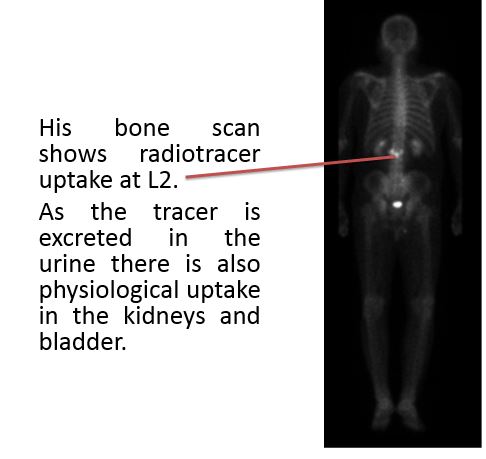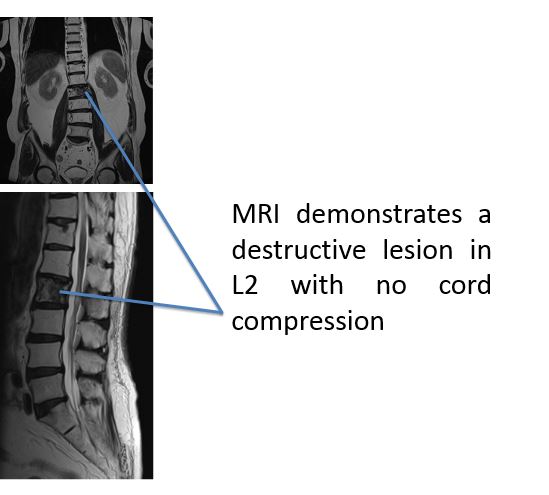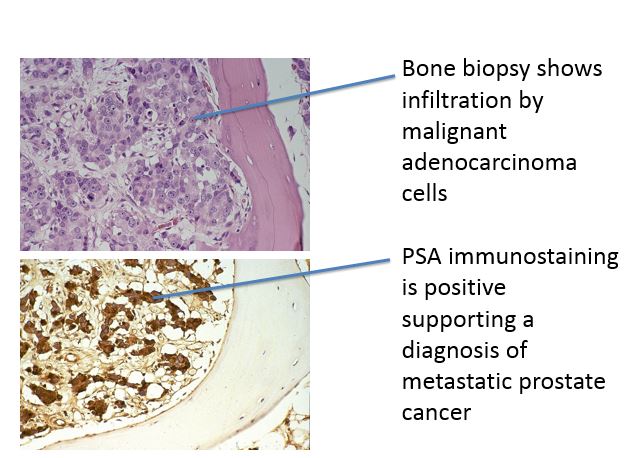A 67-year-old Jamaican Rastafarian complained to his general practitioner of lower back ache and was referred to an orthopaedic surgeon. As he was tender over L2 vertebra, the orthopaedic surgeon arranged a bone scan and an MRI scan.
-
1. What does the technetium pyrophosphate radionuclide bone scan show?
Show Answer
Correct answer:

An MRI was done.
-
2. What does the MRI scan show?
Show Answer
Correct answer:
His bone scan shows radiotracer uptake at L2 and MRI demonstrates a destructive lesion in L2 with no cord compression.

The surgeon is concerned that he is at risk of cauda equina compression and he performs a lumbar spine stabilization surgery using pedicle screws. He sent some of the bones for histological analysis.
-
3. What does the bone biopsy show?
Show Answer
Correct answer:

-
4. How could the surgeon have worked out the diagnosis easier?
Show Answer
Correct answer:
Serum PSA
Serum PSA is increasingly used to screen men with urological symptoms and many people advocate screening all men over a certain age for prostate cancer using serum PSA. Thus far there is no convincing proof that earlier detection and treatment of prostate cancer (following detection by screening rather than symptoms) leads to improvements in mortality. Moreover, two-third of men with a raised PSA do not have prostate cancer and have to endure investigations such as transrectal ultrasound (TRUS) biopsies.
-
5. If the normal range of PSA used in screening programmes was raised from 4 μg/L to 6 μg/L, what would be the effect on sensitivity, specificity, false positive and false negative rates?
Show Answer
Correct answer:
Sensitivity falls
Specificity rises
False positive rates fall
False negative rates rise
Where levels are raised above the normal range to between 4 and 10 μg/L, the chance of the patient having prostate cancer is approximately 25%. At levels over 10 μg/L, the chance of diagnosing prostate cancer increases to 40%. Hence raising the upper limit will increase the likelihood that a man with an abnormal value actually has prostate cancer, but it will also mean that many men with prostate cancer will have a PSA below the cut-off used.
Following surgical fixation, our patient had a serum PSA which was 128 μg/L and a TRUS biopsy confirmed prostate cancer Gleason grade 4+5. He was treated with maximal androgen blockade, a combination of an antiandrogen (bicalutamide) and a gonadotropin-releasing hormone agonist (goserelin acetate). His prognosis of a median survival is around 6 years.


